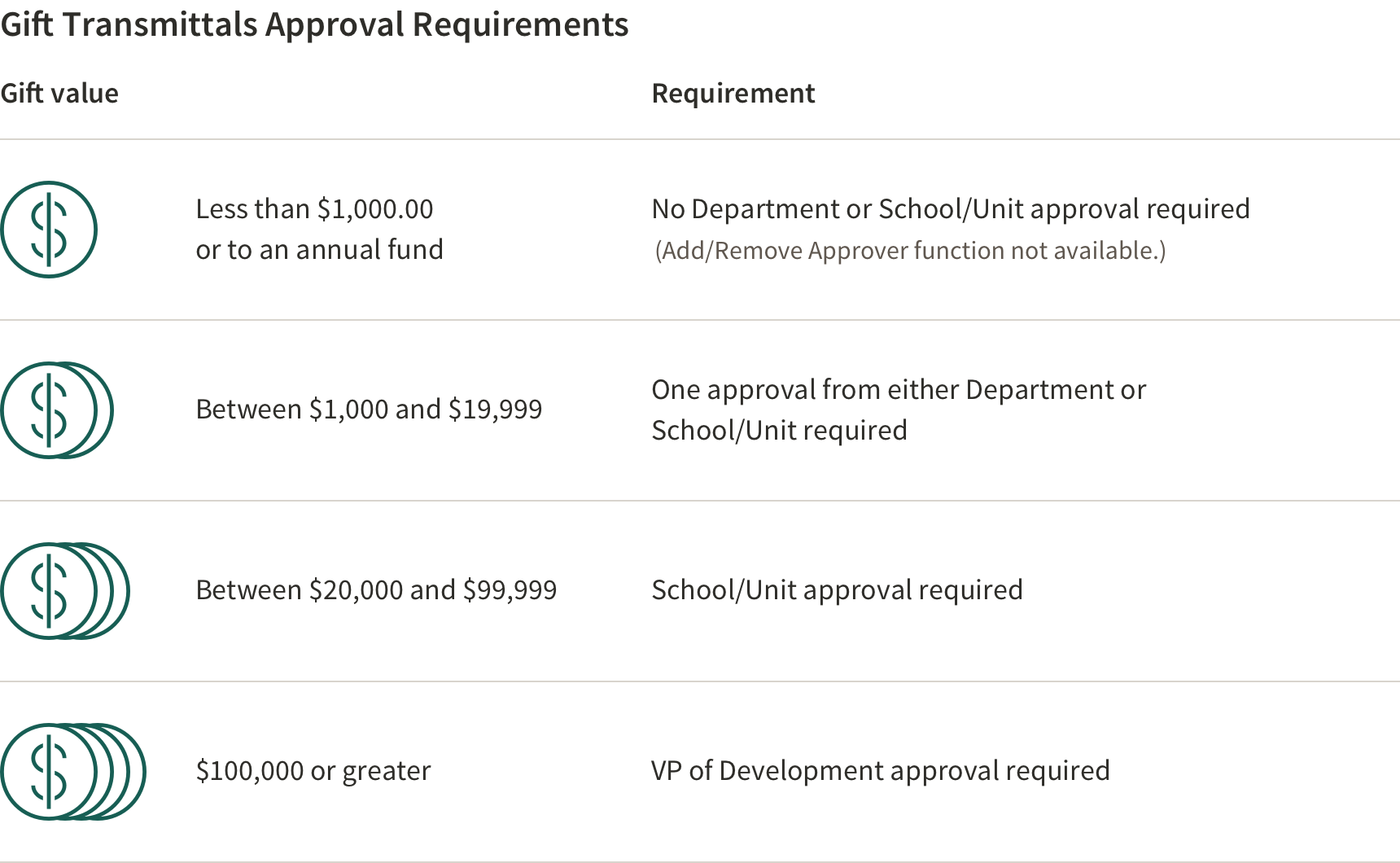Gift Acceptance and Processing
Introduction
A gift is any item of value given to the University by a donor who expects nothing significant of value in return, other than recognition and disposition of the gift in accordance with the donor's wishes. In general, the following characteristics describe a gift:
- A request may be submitted to the potential donor that includes a description of the proposed activities, with the understanding that the description of proposed activities is not intended as a commitment to a specific line of inquiry.
- Gifts may be accompanied by an agreement that restricts the use of the funds to a particular purpose. Beyond that, no contractual requirements are imposed (beyond the requirements of responsible stewardship) and there are no "deliverables" to the donor, e.g., no rights to tangible or intellectual property.
- There is no formal fiscal accountability to the donor beyond periodic progress reports and summary reports of expenditures. These reports may be thought of as requirements of stewardship, and, as such, may be required by the terms of a gift. They are not characterized as contractual obligations or "deliverables."
- Stanford agrees to use restricted gifts as the donor specifies, and does not accept gifts that it cannot use as the donor intends. If circumstances change such that a gift cannot be used as the donor specified, the donor must approve a change in the original restriction, or Stanford must receive court approval to waive the restriction (if the donor cannot be contacted). University approval for changes in the purpose of a gift fund can only be granted by the Provost.
Every individual and office is responsible for ensuring that gifts are: properly accepted (or refused), processed, acknowledged, and used according to the donor’s terms and restrictions and applicable local, state, and federal laws. Every school has a development representative that can assist with the receipt and processing of gifts.
Stanford requires that all faculty, administrators, coaches, and development staff involved in receiving external funding from sources other than the federal government complete the training titled The Gift Acceptance Process: What You Need To Know OOD-2020. The training covers what constitutes a gift, your role in the gift acceptance process, and the role of development staff.

Using Gifts
A donor may provide terms for the use of that gift. If the terms specify a particular purpose, the funds are "Restricted" to that purpose. Income and appreciation produced by restricted endowments is also restricted as per the terms of the endowment. If a donor’s terms allow a gift to be used broadly within a school or unit, it is deemed "Unrestricted" at the unit level, but "Restricted" by central University administration.
When the Fund Accounting office in the Controller's Office sets up a PTA for a gift, they create a Funds Authorization form, and that will become the guiding document for the types of costs that can (and cannot) be charged to the gift PTA. Generally, the Funds Authorization will express donor intent by incorporating the terms of the gift document.
Processing Gifts
Read the detailed policies and procedures listed below for receiving, processing, and using gifts to the University.
Gifts Provide Vital Support for Stanford’s Mission
- Tuition covers only about half of the real cost of undergraduate education. Even those who pay "full price" have benefited from the generosity of alumni, parents, and friends.
- Nearly half of all Stanford undergraduates depend on need-based aid from the university. Stanford is one of the few universities that meet 100 percent of every family's demonstrated need.
- Stanford's endowment covers only about 22 percent of the university's budget. Stanford's endowment is not small ($27.7 billion as of August 31, 2019) but is best measured against Stanford's mission. The university must fund more than three-quarters of its operating expenses from other sources. The amount of endowment spent each year (about 5 percent) is carefully calibrated to enable these funds to support their purposes in perpetuity.
- Most gifts are restricted. The majority of gifts to Stanford, and almost 80 percent of endowment funds, are directed toward particular schools, departments, or programs. Annual, expendable gifts provide vital flexibility.
- Federal funding has declined. Federal support for university research is significant, but it's been declining for years in real dollars. The current budget environment makes such funding even more precarious.
- Stanford's mission is global. Stanford is one of the few institutions in the world with the depth and breadth to help address complex, global problems. Big ideas can be expensive. Making a difference is worth it.
- Every gift makes a difference. Most gifts made to Stanford are under $1,000. But together they add up to millions for financial aid, academics, research, and other programs.
Created: 03.19.2021
Updated: 04.18.2024